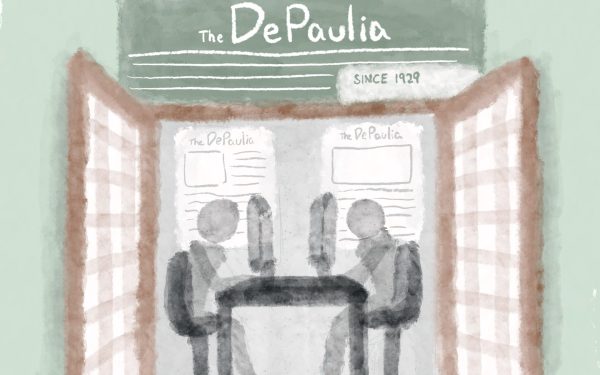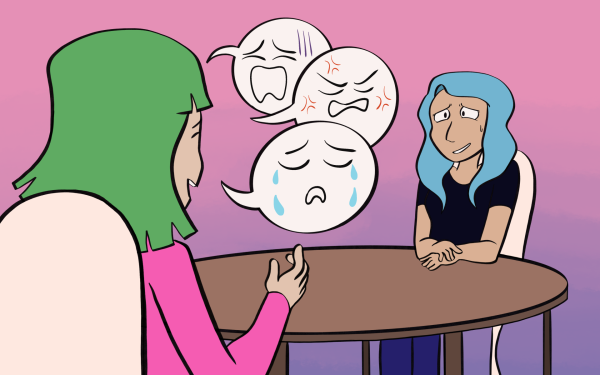Class is sometimes in session: Public schools are technologically advancing as they ruminate replacing curriculum with online teaching and block classes while some are left wondering if it will be effective
Students have complained about the school day being too long, too early and too boring, while they simultaneously have so much to learn in so little time.
In the past, students have had to adhere to strict schedules of 8 a.m. to 3 p.m. school days and considerable workloads with information crammed into seven or eight 50-minute classes. These schedules have existed for decades, and as time passes, students are beginning to benefit less and less from them.
Some school districts in Illinois have switched to “blended learning,” which involves portions of classes being online in addition to in-person teaching, with classes meeting only a few times a week.
Chicago Virtual Charter School has been practicing blended learning for the 12 years it has existed.
Elizabeth Wilcek, director of operations at the charter school, said the school is a hybrid model in which students are expected to attend online instruction as well as face-to-face instruction. They also attend a learning center once a week with live instruction, and the remainder of the time, they are working online.
Wilcek said the program allows teachers to meet students’ needs and provide more instructional support through one-on-one time with teachers. Other students may need less support and can work more independently on project-based learning.
Wilcek also said there can be difficulty ensuring students are attending both the live and online instruction regularly.
Overall it is an opportunity to enhance learning that students and teachers might not find in a traditional school day.
Nicole Ellis, a counselor at Lane Tech College Prep, said school starting at 8 a.m. can be a difficult start time because of students staying up late and because of students who have a long commute. Students can be tired when they get to school, before the day has even started.
“I do think the way our day is set up, it is conducive to students’ learning,” Ellis said.

Ellis said a block schedule of having four classes on one day and four classes on another day would be the best structure. Students could have more time to focus on a class while simultaneously having less to worry about in one day.
If schools are going to bombard students with subjects that need to be completed to fulfill curriculum requirements, they need to be strategic and realistic about how much students can do in such a short allotment of time.
But blended learning could be an issue for students who have depression or anxiety, because online learning could encourage avoidance of facing the issue of coming to class, Ellis said.
“By having [students] come to school, work through it, talk to teachers, it allows them to build some resilience,” Ellis said. “If you only have the option of being online, I do think that could be dangerous in terms of becoming avoidance.”
Ellis makes a point in saying schools should accommodate students who may have needs regarding mental health, especially because mental health concerns are becoming more prevalent. While she said she does not think an entire district should consider using blended learning, she did say it should be considered for extenuating circumstances.
Students would be more successful if schools listened to their needs. Especially at such a formative time as adolescence, there are psychological needs that cannot be ignored. If students have to focus on school and cannot take care of themselves both physically and mentally, this creates problems. Students can fall into a hole of being unwell, which negatively impacts their academic performance and creates a series of problems, such as falling behind and excessive stress that take a while to fix.
Donna Kiel, a senior instructional assistant professor in DePaul’s College of Education and founder of the Office of Innovative Professional Learning, said she found blended learning effective for students.
She said the effectiveness depended on the teacher’s skill. When done correctly, she said, the online portion of the class met the learner needs, and the in-person portion complemented the online learning.
“When it happens, it’s very powerful for the student because it’s very practical,” Kiel said. “Students in their face-to-face encounter are applying the learning rather than being a passive receiver of learning.”
Kiel witnessed the benefits of blended learning at both St. Joseph High School in Westchester and South Beloit High School in South Beloit, where she served as principal for several years.
One of the problems with blended learning is school districts simply disposing of the concept when they do not train teachers correctly, Kiel said.
Kiel said research shows current school days do not meet the needs of the students, especially high school students.
“Changing that school day, with some really careful, deliberate research around what time of day is best, how much time students need, I think that’s really compelling and significant,” Kiel said.
Student success depends on student support, and if schools take their students’ well-being into consideration, they will pave the way for the success they strive for in daily learning.












